——— G ———
G – the symbol for conductance.
g – the abbreviation for gram.
GaAsFET – Gallium Arsenide Field-Effect Transistor. A special type of field-effect transistor (FET) used in amplifier circuits at VHF, UHF, and microwave frequencies. The GaAsFET has high sensitivity and a very low internal noise. It is sometimes used in wireless microphones.
gaff – see gaffer tape.
gaffa – see gaffer tape.
gaffer – (1) The head of the lighting and/or electrical department on a film crew. (2) Short for gaffer tape.

gaffer tape – a tough, wide cloth tape designed for temporarily fastening cables to the stage floor or other surfaces to prevent tripping, although it often used for many other applications. Unlike common duct tape which has a rubber-based adhesive, it uses a synthetic adhesive that leaves no gummy residue. Also called gaffer's tape, gaff tape, gaff or gaffa.
gaffer's tape – see gaffer tape.
gaff tape – see gaffer tape.
gain – (1) An increase in audio signal level. The opposite of attenuation. (2) The amount of increase in the strength of an audio signal, usually expressed in decibels (dB). The opposite of loss. (3) The initial control sometimes found on a mixer, console, or preamp used to adjust the input level of an audio signal. Sometimes called trim, gain trim, sensitivity, or input level. (4) When referring to the gain of a vacuum tube, it is often called amplification factor (mu).
gain before feedback (GBF) – the maximum amount of gain that can be achieved in a sound system before feedback occurs. GBF is a less scientific measure than potential acoustic gain.
gain control – the device used to adjust the level of an audio signal, a circuit, or an amplifier, usually by turning a knob or moving a slider.
gain range – the difference between the maximum gain and minimum gain of a device.
gain reduction – the amount of reduction in a signal level due to the action of a compressor or limiter when the signal exceeds a preset threshold.
gain riding – see riding faders.
gain-sharing algorithm – see automatic mixer.
gain stage – any point (stage) in an audio signal path where the level (gain) of the signal can be adjusted. Essentially any place the signal encounters a level control is considered a gain stage.
gain staging – the process of managing or optimizing signal levels at each stage in a signal path. The goal is to match the level at each stage in the signal path, maintaining the same or very nearly the same level going into and out of each device or process (unity gain). Raising a signal extremely high at one stage and reducing it at another will tend to reduce dynamic range and raise the noise level.
gain structure – the way in which gain staging is implemented within an audio system.
gain trim – see trim, definition #2.
galvanic isolation – a method of isolating portions of an electrical systems to prevent current flow, but still allowing communications between them, using other means, such as capacitance, induction, or electromagnetic waves, or by using optical, acoustic, or mechanical methods. It is used to break ground loops or to prevent accidental current from flowing through a person's body to ground.
gamma ferric oxide – see ferric oxide.
gang – two or more controls that operate together, so that changing any one of them changes them all. Also called ganged.
gap – (1) The extremely thin slit between the ends of the electromagnet that forms a tape head. Also called head gap. (2) The time between each song on a CD or LP. Also called a spread or pre-gap. (3) In a loudspeaker, the area between the pole piece and the magnet, into which the voice coil fits. See also speaker motor.
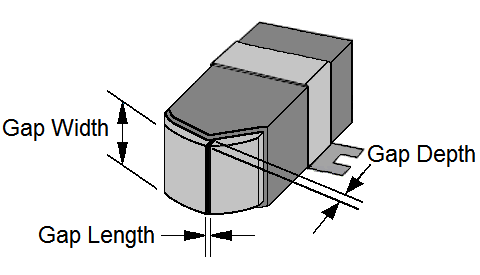
and Gap Length
gap depth – the dimension of the head gap measured in the direction perpendicular to the surface of the tape head.
gap length – the dimension of the head gap measured from one pole face to the other on a tape head, in the direction of tape travel.
gap loss – the loss in signal output due to the gap length of the playback head. The loss increases as the wavelength decreases, equal to approximately 4 dB when the wavelength is twice the gap length, and the output becomes zero when the wavelength is approximately 1.15 times the gap length.
gap width – the dimension of the head gap measured at a right angle to the tape direction. The gap width of the record head determines the track width. The gap widths of playback heads are often smaller than those of record heads to minimize tracking errors.
GarageBand – a stripped-down digital audio workstation developed by Apple.
GAS – Gear Acquisition Syndrome (or sometimes Guitar Acquisition Syndrome). An urge or borderline obsessive compulsive disorder that makes some people want to acquire and accumulate more and more gear. This term is commonly applied to (a) guitarists, who want more guitars, guitar amplifiers, pedals, etc., (b) keyboardists, who want more keyboards, synthesizers, samplers, etc., (c) drummers, who want more drums, drumsticks, percussion instruments, etc., (d) studio engineers, who want more microphones, cables, effects processors, etc., (e) photographers, needing more cameras, lenses, filters, flashes, etc., and (f) other similar gear-driven professions.
gate – (1) To shut off an audio signal when its level drops below a preset threshold. (2) A signal processor that shuts off an audio signal when its level drops below a preset threshold. See also noise gate. (3) An electronic signal (trigger) that is generated when a key on an electronic keyboard is depressed triggering an envelope generator or other event. Also called a gate signal or signal gate.
gate control – see control voltage.
gate divide – see step.
gated reverb – a reverberation in which the reverberant tail is cut off when it goes below a certain level. Unlike most reverb effects, gated reverb does not emulate any type of natural reverb. The effect can be created using natural or artificial reverb.
GatesAir – a company headquartered in Mason, Ohio, that manufactures, markets, and services broadcast equipment. The company was founded by Parker Gates in 1922 in Quincy, Illinois as the Gates Radio Company. In 1957, the company was acquired by Harris Intertype Corporation, which became the Harris Corporation. In 1972, it expanded into television broadcasting equipment when it bought the TV equipment line of General Electric. It changed the company name to Harris Broadcast in 1975. In 2013, it was acquired by the Gores Group, and a year later it was split into two companies: Imagine Communications Corp., a software and networking company, and GatesAir, the broadcast equipment company.
gate signal – see gate, definition #3.
Gates Sta-Level – a compressor introduced in 1956, made by the Gates Radio Company. Because of its low cost, it was used extensively at pop radio stations throughout the US in the 1960s. It provided mild, automatic gain control with simple-to-use controls using ordinary vacuum tube circuitry. They also found use in recording studios at the time. Today they are quite rare and command a high price. Retro Instruments has introduced a re-creation of the Sta-Level.
gauge A phone plug – see gauge B phone plug.
gauge B phone plug –a phone plug with a 0.25-in (6.35-mm) diameter, but with a smaller tip and a recessed ring so that the tip and ring of the plug does not touch the ground contact of the jack. This plug was the original telephone switchboard connector and is still used in broadcast, telecommunications, and professional audio applications. Conventional phone plugs are designated gauge A. Also called a BPO plug or PO 316 plug.
gauss (G or Gs) – the cgs unit for a magnetic field, named after German mathematician and physicist Carl Friedrich Gauss. One gauss equals 10‑4 tesla, the SI unit.
GBF – Gain Before Feedback.
GC – Ground-Compensated.
G clef – see treble clef.
GDPR – General Data Protection Regulation.
GE – General Electric. A multinational conglomerate headquartered in Fairfield, Connecticut. It operates through four divisions: Energy, Technology Infrastructure, Capital Finance, and Consumer and Industrial. The conglomerate has grown through many acquisitions, such as RCA (which originally spun off from GE), Enron Wind, Universal Pictures, Dresser, and many more.
gear – a slang term for equipment.
Gefell – see Micotech Gefell.
gel pads – see damper pads.
gender – the orientation of a connector as being either male or female.
General Data Protection Regulation (GDPR) – a regulation in EU law approved in 2016 to protect the data and privacy of all individuals within the European Union (EU) and the European Economic Area (EEA), as well as the export of personal data outside the EU and EEA. The GDPR supercedes the Data Protection Directive 95/46/EC. The goals of the GDPR are to ensure that personal data is gathered legally and under strict conditions, and those who collect and manage this data are required to protect it from misuse and exploitation, as well as to respect the rights of data owners.
general MIDI – a set of specification that ensures that all MIDI controllers and keyboards function in the same way.
general MIDI 2 (GM2) – an extension introduced in 1999 of the general MIDI standard, to provide higher quality and increased standardization of general MIDI files. GM2 increased voices from 24 to 32, increased patches from 128 to 256, and defined more continuous controllers.
generating element – see capsule.
generation – the number of times an audio signal has been copied. The original master tape or original digital audio file is considered to be the first generation.
generation locking – see generator locking.
generation loss – the degradation in signal quality, such as increases in hiss, distortion, and noise, that occurs each time an analog recording is copied. This is normally not a problem with digital copies.
generator locking – a technique for synchronizing video signals in which a sync signal is sent from the master source to the slave source to lock onto (follow) the master. Synchronization of signals at combining or switching points prevent screen flicker or rolling. Also called generation locking or genlock for short.
genlock – short for generator locking.
genre – a category of literary, artistic, or musical composition characterized by a its style, form, or content. There are many genres of music, many of them overlapping, including rock 'n' roll, country, popular, jazz, classical, blues, hip-hop, folk, R&B, hard rock, Tejano, Americana, Latin, punk, heavy metal, and rap to name just a few.
gentle – a descriptive term for a sound having reduced harmonics in the midrange and high frequencies. Opposite of edgy. See also mellow.
geometric mean – a type of average, that is defined as the nth root of the product of n numbers. (A geometric mean can only be calculated for sets of positive real numbers.) The geometric mean can also be calculated as the exponential of the arithmetic mean of the logarithm of the values. It is useful for calculating the center frequency of a filter when the upper and lower frequencies are known, using the formula fC = square root (fU × fL). See also arithmetic mean, harmonic mean, and median.
Georg Neumann GmbH – a manufacturer of professional recording microphones founded in Berlin, Germany, in 1928 as Georg Neumann & Company. Contrary to popular opinion, Neumann did not invent the condenser microphone, but produced the world's first commercially available condenser, the CMV-3. During World War II, Neumann's factory in Berlin was damaged by Allied bombing, and Georg Neumann moved the company to the town of Gefell in Thuringia, a state in eastern Germany, where he resumed production in 1944. After the war, Georg Neumann relocated to one of the Allied sectors of Berlin and re-established his company as Georg Neumann GmbH. Meannwhile, Thuringia had come under Soviet control, and the company in Gefell became a state-run enterprise in East Germany. It continued to manufacture microphones using the Neumann name until the reunification of Germany in 1990. It then assumed the name of Microtech Gefell. In 1949 Georg Neumann GmbH began producing the U-47, based on the M-7 capsule of the earlier CMV-3. The U-47 microphone became the first condenser microphones to achieve widespread use in the recording industry worldwide. Neumann arranged to have the microphones sold and distributed by Telefunken, who applied their nameplate to the microphone until 1959. Telefunken never manufactured any microphones during that period, but distributed several microphones under its name from other companies such as Neumann and AKG. In 1991, Georg Neumann GmbH, being near bankruptcy, was acquired by Sennheiser.
GEQ – Graphic EQualizer.
Gerzon Array – a stereo microphone technique first decribed by Michael Gerzon (of Ambisonics) that he credited to Tony Faulkner. The technique specifies two cardioid microphones spaced 5 cm (2 inches) apart and at an angle of 120 degrees. The Gerzon technique has better mono compatibility than DIN, NOS, or ORTF. It produces a nearly flat and uniform distribution of the room's reverbertions, which produces a very stable stereo image. It falls into the near-coincident pair category of techniques. Other techniques in this category include A-B, DIN, EBS, Faulkner array, NOS, RAI. See also coincident pair (Blumlein array, mid-side, X-Y pair) and spaced pair (A-B, Decca tree, spaced cardioids, spaced omnis). See table comparing various stereo microphone techniques.
GFCI – Ground Fault Circuit Interrupter.
GFI – Ground Fault Interrupter. See ground fault circuit interrupter.
ghost bend – a guitar technique in which a string is silently bent up before it is plucked and released after it is plucked to create a note that drops in pitch. The effect is similar to a dive bomb using a tremolo bar. Also called a reverse bend or pre-bend.
ghosting – a slight pre-echo heard on a vinyl record one revolution before the beginning of a loud band, or a post-echo just after the loud band stops. The loud waveform carved by the cutterhead stylus in the modulated groove deforms the adjacent blank groove, resulting in a faint repeat of whatever the modulated groove contains. Analogous to print-through on magnetic recording tape. Sometimes called pre-groove echo.
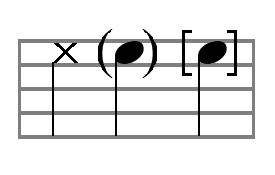
Notation
ghost note – (1) A music note with a rhythmic value, but no discernible pitch. On stringed instruments, a ghost note is played by sounding a muted string so that it is more of a percussive sound than an obvious pitch. In musical notation, it is represented with an “X” for the note head instead of an oval or by parentheses or brackets around the note head. Also called dead note, muted note, silenced note, or false note. (2) An accidental note created when playing a MIDI instrument when the note is not depressed hard enough to be heard. (3) Slang for edge yowl.
ghost vocal – a vocal recorded ahead of time or taken from the original recording to be used in case something goes wrong during a live performance.
gibi- – one of the new binary prefixes approved by the IEC and used to distinguish between binary and decimal prefixes, i.e. gibi represents 1,073,741,824 = 230 versus giga which represents 1,000,000,000 = 109. For example, you would use 24 gibibits, abbreviated 24 Gib, or 24 gigabits, abbreviated 24 Gb.
Gibson Brands, Inc. – a company that manufactures guitars, other musical instruments, and consumer and professional electronics based in Nashville, Tennessee. The company was founded in Kalamazoo, Michigan, by Orville Gibson in 1902 as the Gibson Mandolin-Guitar Manufacturing Co., Ltd. In 1944 Gibson was purchased by Chicago Musical Instruments (CMI). In 1969, CMI was acquired by the South American brewing conglomerate ECL. It became a subsidiary of Norlin Musical Instruments in 1974. Gibson Guitar Corporation was nearly bankrupt when it was purchased by Henry E. Juszkiewicz, David H. Berryman, and Gary A. Zebrowski in 1986. In 2007, Gibson purchased Garrison Guitars, and in 2011, it acquired the Stanton Group, which included Stanton DJ, Cerwin Vega, and KRK Systems. Gibson then formed a new division, Gibson Pro Audio, to market professional audio equipment, including headphones, loudspeakers, and DJ equipment. In 2012. Onkyo, became part of the Gibson Pro Audio division. In 2013, Gibson acquired a majority stake in TEAC Corporation. That same year the corporation was renamed Gibson Brands, Inc. In 2014, Gibson acquired the consumer electronics business of Royal Philips.
gig – (1) A booking, job, or performance by a musician. (2) To work as a musician. (3) Slang for giga, especially using gigs to mean gigabytes.

giga- (G) – the SI prefix for a factor of one trillion, 1,000,000,000 or (109). See also gibi-.
GIK Acoustics – a company founded by Glenn Kuras in 2004 and headquartered in Atlanta, GA, that designs and produces products to treat and control acoustics. In 2008, GIK Acoustics-Europe was opened in Bradford, UK.
giraffe – a microphone boom having a counterweighted arm mounted on a tripod, often having casters.
git – slang for a guitar.
glary – a descriptive term for a sound with too much emphasis in the high frequencies. Too bright and edgy.
glass – a slang term for fiber optics or a fiber optics cable.
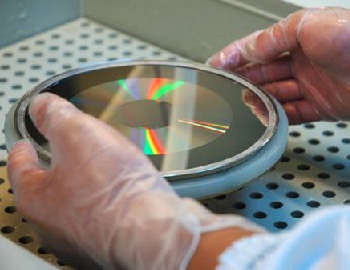
glass master – a glass disc used to create the stamper from which compact discs are pressed. Glass masters are produced in clean rooms since dust particles and other contaminants can cause serious errors on the final disc. A glass disc, 24 cm (9.4 in) in diameter and 6 mm (0.24 in) thick, is polished to a very smooth surface, cleaned, and then coated with a light-sensitive material that is etched with pits using a laser beam recorder. It is electroplated with a layer of nickel, which is then used to create the stamper.
glassy – a descriptive term for a sound that is too bright. Similar to glary.
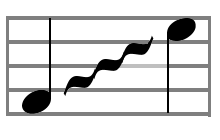
glide – see glissando, slur, or portamento.
glissando – a glide from one musical note to another. Although similar to portamento, it is slightly different as glissando is smoother and more continuous, while portamento is a more rapid pitch change that occurs at the end of the note. It differs from legato, which is playing notes contiguously by jumping from one note to the next. It is an Italian term derived from the French verb glisser, to glide. Also called a glissando slide or simply slide. See also slur.
glissando slide – see glissando.
glitch – (1) An undesired short-term malfunction of a piece of equipment or system, often unexplained. Because it is short-lived, it is often difficult to troubleshoot. (2) A computer glitch is a temporary disruption or malfunction in a software program or computer process. It is less serious than a software bug, which can disrupt the functioning of the software or cause the computer to crash. (3) An audio glitch is a dropout, discontinuity, clicking, stuttering, or other defect in an audio signal that occurs occasionally, or sometimes frequently, when using audio software or a digital audio workstation (DAW), usually caused by exceeding the capabilities of a computer. This could be due to insufficient memory, inadequate CPU power, or the computer not being optimized for audio or for the software being used.
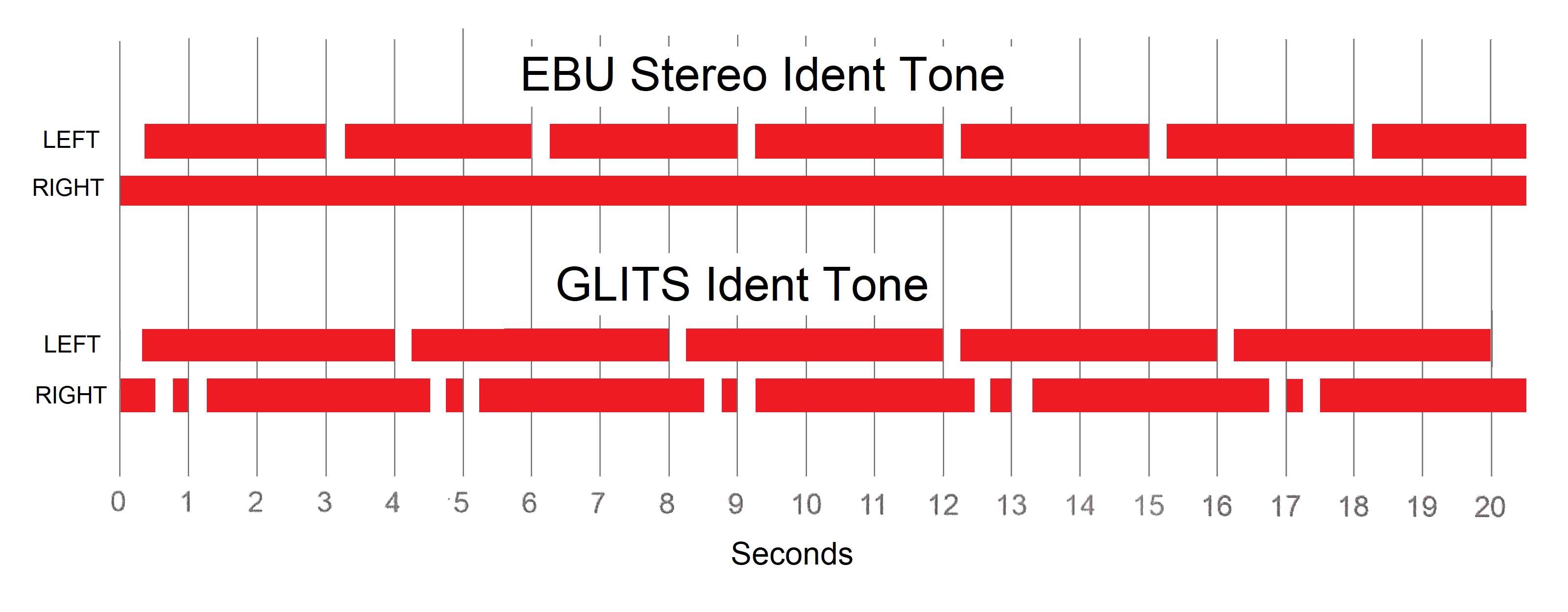
GLITS – Graham's Line Identification Tone System or Graham's Leg Identification Tone System. A test signal for stereo systems, devised by BBC TV Sound Supervisor Graham Haines in the 1980s, that consists of a 1-kHz tone at -18 dBFS (0 dBu) on both left and right channels (called “legs” by the BBC), with interruptions which identify the channels. The left channel has one interruption of 250 ms every 4 seconds. The right channel has two 250-ms interruptions 250 ms later spaced by 250 ms. The benefits of this sequence over the EBU stereo ident tone is each channel is explicitly identified. See also BLITS.
Global Music Rights – a performance rights organizations founded in 2013 as an alternative to BMI, ASCAP, and SESAC. It protects the rights of artists and publishers and collects and distributes royalties to its members. Being smaller it claims to be more responsive to its members.
glockenspiel – a percussion musical instrument, consisting of two rows of tuned metal bars that are played with a pair of knobbed beaters, producing a high-pitched, bell-like sound. It is similar to a xylophone except the bars on a xylophone are made of wood, while the glockenspiel is usually smaller and higher pitched.
glue – (1) Slang for what holds together the sound of a well-blended, tight-knit group of instruments. (2) A term used by some DAWS for consolidate.

Glyn Johns method – a drum miking technique using four microphones developed by recording engineer, producer, and musician Glyn Johns. It uses close miking on the kick drum (usually with a dynamic mic) and on the snare drum (dynamic) and two overhead mics (typically condensers or ribbon mics), placed 3 to 4 feet above the drum kit, with one overhead directly over the snare and the other slightly to the left or right, but each the same distance from the snare. Sometimes called the Glyn Johns technique or the triangle method.
GM – General MIDI.
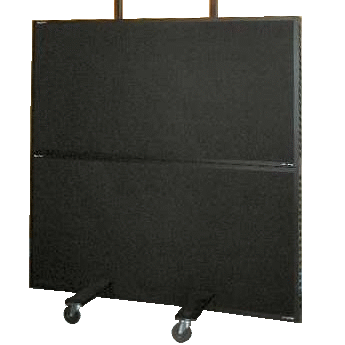
GND – abbreviation for ground.
gobo – a portable isolation panel used to reduce sound leakage between microphones. Short for go between. Also called an acoustic screen, movable screen, movable panel, or screen.
God mic – slang for a microphone that can be heard everywhere within a space, often with the person speaking being unseen, frequently used by sound engineer, stage managers, or directors to communicate with the people on stage during setup, rehearsals, or sound checks or for general announcements to an audience. See also talkback.
golden – a descriptive term for a sound with just the right amount of coloration, characterized as warm, round, rich, and sweet.
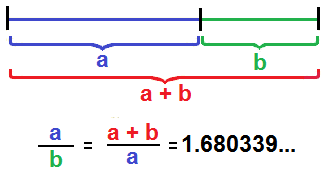
golden ratio – the ratio, designated by the Greek letter phi (φ), found by dividing a line into two parts so that the longer part divided by the smaller part is also equal to the whole length divided by the longer part. It is exactly equal to (1+√5)/2 or approximately equal to 1.618033988749894848204586834... It was first discovered by the Greeks and was considered to be very pleasing to the eye. It has been admired and used by artists, architects, scientists, and mathematicians. Although it is sometimes used for room ratios, most authorities generally discount the golden ratio as being useful in acoustics. Also called the golden section, golden mean, extreme ratio, mean ratio, medial section, divine proportion, divine section, golden proportion, golden cut, and golden number.
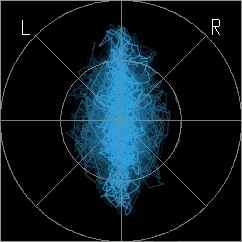
Golden Reel Award – see MPSE.
golpeador – a thin piece of white or transparent plastic affixed to the soundboard of a flamenco guitar, usually both above and below the sound hole. It is not a pickguard as picks are not used in flamenco. The golpeador provides a stable surface for the percussive tapping with the fingers and fingernails (called the golpe technique) a feature of flamenco music. Also called a tap plate.
goniometer – a display of a Lissajous figure that shows the amount phase difference in a dual-channel stereo signal. It allows a sound technician to monitor and optimize the stereo image. When a goniometer is used to meter surround sound, it is called a jellyfish display.

gooseneck – a flexible jointed-metal tube curved like the neck of a goose. Goosenecks are sometimes used to support microphones or small lights. Also called a swan neck.
GR plug – see banana plug.
grab – see rip.
Grace Design – a company founded by Michael and Eben Grace in the early 1990s and located in Lyons, Colorado, that designs and manufactures consumer and professional audio equipment.
grace note – a musical note added as an ornament, usually printed smaller sometimes with a slash through the note stem to indicate that it is melodically and harmonically nonessential.
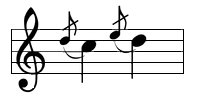
Gracenote, Inc. – a company founded in 1998 and headquartered in Emeryville, California, that maintains and licenses an online database containing information about the contents of audio compact discs called the CDDB. The company was formerly known as CDDB.
Gracenote DB – see CDDB.
grain – see audio grain.
grainy – a descriptive term for music that sounds like it is sliced into tiny grains, rather than flowing continuously. Graininess can be caused by poor digital resolution or a poorly performing A/D converters.
gram (g) – a unit of mass in the CGS system equal one thousandth of a kilogram or approximately 0.035 ounces.

Grammy® – the annual awards for outstanding achievement in the US music industry presented by The Recording Academy. The name is a short version of gramophone, the original name of the award.
gramophone – (1) An early phonograph (disc player) made by the Gramophone Company. The gramophone was patented in 1887 by German immigrant Emile Berliner. Berliner was the first inventor to record on flat disks (records). Originally the disks were made of glass, but later changed to zinc and eventually to plastic. These disks were the first sound recordings that could be mass-produced by creating master recordings from which molds were made, allowing hundreds of disks to be pressed from each mold. (2) A machine that reproduces sound from a record, consisting of a turntable that spins a rotating disc or cylinder (the record) at a constant speed and a stylus that travels along a groove and detects vibrations that are converted into sound, which is amplified and played over a loudspeaker (or in earlier models, an acoustic horn). Originally, the term was used only for disc players while the phonograph was used only for machines using cylinders. However, the term gramophone has come into prominent usage in the UK for all record players while the term phonograph became the prominent term in the US. Also called a record player.
gramophone cartridge – see phonograph cartridge.

Classical Music Awards
Gramophone Classical Music Awards – the annual awards for the best recordings in the classical recording industry. Begun in 1977, the recipients are selected by writers for Gramophone
magazine along with various members of the industry. The awards are normally presented in London each year in September. Called Gramophone Awards for short.
Gramophone Company Limited – one of the early recording companies, which was based in the UK, and was the parent company for the His Master's Voice (HMV) label. The company merged with Columbia Graphophone Company in 1931 to form Electric and Musical Industries Limited (EMI), but continued to use the title of The Gramophone Company Limited in the UK until the 1970s.
gramophone pickup – see phonograph cartridge.
gramophone record – see record.
grand piano – a large, full-size piano with a horizontal body, strings, and soundboard, with a keyboard on the front and usually supported on three legs. Grand pianos exist in three sizes: baby grand, boudoir grand, and concert grand.
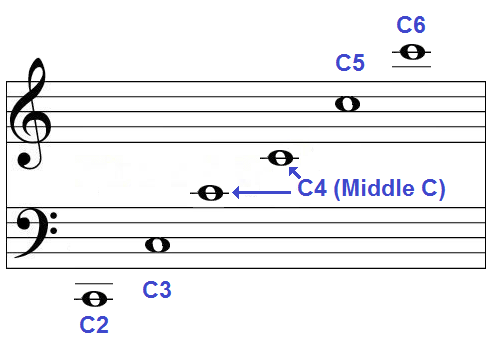
grand staff – a music notation combining the treble clef staff and the bass clef staff together, which covers the most common range of pitches, typically used for keyboard music.
granular synthesis – a technique of assembling segments of sounds called grains into created sounds. Although very complex sounds can be created using this process, until recently the computer power needed to do this made it impractical, but now some game consoles are becoming powerful enough to use the technique. See also granulation.
granulation – a process of segmenting a sampled sound into very small elements called grains. These grains can be reassembled into almost limitless combinations, a process called granular synthesis.
granulation noise – see quantization error.
graphic display resolution – see resolution, definition #2.
graphic editing – the editing of audio files by modifying graphic representations of the audio on a computer screen, such as changing the shape of an envelope or removing objects from a spectral analysis.

graphic equalizer – an equalizer that consists of several sliders controlling evenly spaced pre-set frequency bands. Looking at the sliders gives a graphical representation of the frequency response. Sometimes abbreviated as GEQ. See also parametric equalizer.
Graphophone – the trademark of an improved version of the phonograph developed by Charles Sumner Tainter and Chichester Bell at the Volta Laboratory in Washington, D.C. Among other improvements the Graphophone use wax-coated cardboard cylinders, instead of cast iron cylinders covered with tinfoil as used by Edison. Using wax resulted in improved sound fidelity, longer recordings, and increased longevity. Instead of the manual crank used on Edison's phonograph, Graphophones used foot treadles to rotate the cylinders. Later they used wind-up clockwork drive mechanisms, which eventually were replaced by electric motors. The Graphophone was produced and sold successively by the Volta Graphophone Company, the American Graphophone Company, the North American Phonograph Company, and finally by the Columbia Phonograph Company (which became Columbia Records).
grave – a musical term indicating a slow and solemn tempo, typically 20 to 40 bpm. See chart of tempo terms.
gray noise – see grey noise.
grazing effect – the ways in which an audience affects the transmission, absorption, and reverberation of sound in a space.
Green Book – a subset of the White Book that specifies an operating system, application programming interface, and playback hardware for CD-Interactive (CD-I). Only Philips supports this standard. See also Blue Book, Red Book, Yellow Book, White Book, and Orange Book.
Green Bullet – see Controlled Magnetic microphone.
green noise – an unofficial term for random noise with several definitions: (1) The mid-frequency component of white noise, as used in some forms of colored dithering (dithering that uses random noise). (2) Bounded Brownian noise. (3) “The background noise of the world,” a noise simulating that of natural settings with no man-made noise. It is determined by averaging noise over a long period of time at a number of outdoor sites around the world. It is similar to pink noise with an emphasis around 500 Hz. See noise colors.

grey noise – a random white noise with an inverted A-weighted loudness curve that the listener perceives as equally loud at all frequencies. Sometimes spelled gray noise. See noise colors.
grid – (1) The vertical lines that in many DAWs extend downward across the tracks to indicate the position of bars and beats or time divisions of the timeline. Also called grid lines. (2) Short for grid bias.
grid bias – in a vacuum tube, the element that controls the current flow (flow of electrons) from the cathode to the plate (anode). It acts as an amplifier, taking a relatively small input signal on the grid and generating a relatively large signal output at the plate. It consists of a wire wound around two posts or is sometimes shaped like a basket. The wire is made of tungsten or molybdenum and sometimes is plated with gold. Sometimes called a control grid or grid for short. See also screen grid.
grid lines – see grid, definition #1.
grid mode – one of four methods of editing in Pro Tools in which clips that are added or moved snap to a user defined grid or quantization value. The grid can be defined based on musical values (quarter notes, eighth notes, etc.) or time values (seconds, milliseconds, etc.). This mode allows you to drop in clips wherever you want, but it maintains the musical timing. The other modes are shuffle mode, spot mode, and slip mode.

Microphone Grille (R)
grille – a mesh made of metal, plastic, or cloth mounted in front of a microphone diaphragm or a speaker driver, to protect it from damage. The grille should be as acoustically transparent as possible so that it does not interfere with the passage of sound waves. Not to be confused with grill, which is used for cooking barbecue.
grille cloth – an acoustically transparent cloth (or sometimes metal mesh) placed over the front of a loudspeaker to protect it from damage and make it look aesthetically pleasing.
groove – (1) A long, narrow cut or depression that begins at the outer edge of a record and winds in a spiral until it reaches near the center of the record. (2) Slang for the “feel” or rhythm of a song. See also swing and “in the pocket.” (3) Slang for to dance or move to the rhythm of a song, especially jazz or R&B.
“grotbox” speaker check – see mix speaker check.
“grot” speaker check – see mix speaker check.
ground – (1) The reference point in an electrical circuit from which other voltages are measured, usually designated as the zero volt reference. Sometimes abbreviated as GND. (2) A shortened version of earth ground.
ground bass – in music, a short theme, usually played by the bass, that is repeatedly played as other parts of the music vary. A good example is the intro to Pink Floyd's “Money.”
ground bus – a common connection to which various pieces of equipment can be attached in order to be grounded.
ground-cancelling output – see ground-compensated output.
ground-compensated (GC) output – an output in which the signal is carried on one lead with nothing on the second lead and ground on the third lead, in contrast to a balanced output where a positive signal is on one lead, a negative signal on the second lead, and ground on the third lead. It is similar to an impedance balanced output (see balanced output), but has no resistor between the second lead and ground. A balanced input from a GC output receives a full-strength signal with noise cancellation just like a balanced output because the second lead offsets any noise picked up by the cable. A ground-compensated output also works well with an unbalanced input delivering a full-strength signal on two leads, but without the noise-cancelling benefits of a true balanced connection. In contrast, a 2-pin unbalanced output connected to a 3-pin balanced input only delivers half of the signal. Ground-compensated connections are sometimes used on mixers and other devices so they can accept both unbalanced and balanced signals. Also called a ground-cancelling output.
ground effect – the loss in signal strength due to a transmitter being too close to the ground. UHF systems are less susceptible to this effect than VHF systems because UHF has a shorter wavelength.
ground fault circuit interrupter (GFCI) – a device designed to protect a person from electrical shock by tripping a circuit (interrupting current) when a difference in current occurs between the “hot” and neutral wires, indicating a short or abnormal diversion of current. Also called a ground fault interrupter (GFI). In the UK, it is called a residual-current device (RCD).
ground fault interrupter (GFI) – see ground fault circuit interrupter (GFCI).
grounding rod – a rod, usually made of copper, driven into the soil to establish an earth ground.

Showing Grounding Tab
grounding tab – a metal tab or ring on a ground lifter (3-prong-to-2-prong adapter) designed to be attached to electrical ground either by attaching it to the cover plate with a metal screw or by means of a wire attached to ground. Failure to ground the tab is potentially hazardous.
ground lift – a switch that breaks the connection between the ground point in one circuit and the ground point of another, in order to disable a ground loop. Also called a ground lift switch.
ground lift switch – see ground lift.
ground lifter – a 3-prong-to-2-prong adapter used to connect a 3-prong plug into a 2-slot electrical receptacle. Use of such adapter is potentially hazardous if the grounding tab is not connected to an electrical ground. Also called a cheater plug (slang).
ground loop – a connection between two pieces of equipment with two different paths to ground, resulting in an undesired hum. The ground loop can often be corrected using a ground lift. Also called an earth loop (mainly British).
ground plane – a flat or nearly flat horizontal conducting surface that acts like part of a radio antenna and reflects radio waves from the other elements of the antenna.
group – two or more tracks or audio signals containing similar material that are put together in order to be controlled by a single control, a group fader. Mixing consoles and DAWs usually provide a method to create a subgroup. Typical groups are drums, vocals, and keyboards. Sometimes called a subgroup, but should not be confused with submix.
group delay – a type of distortion that occurs when the amount of phase change varies with frequency. In other words, each of the harmonic frequencies in a signal are delayed by different amounts. Sometimes called phase distortion or, less precisely, phase shift.
group fader – the control (fader) that adjusts the level of a group or submix.
group master – another name for a submaster.
GR plug – see banana plug.
Grundig AG – formerly a German manufacturer of consumer electronics established in 1930 in Nuremberg, Germany. The company changed ownership several times before becoming part Koc Holding group of Turkey in 2007.
grunge – see midrange smear.
grungy – (1) A descriptive term for a sound that has lots of harmonics or intermodulation distortion. (2) A descriptive term for a sound that has grunge or midrange smear, a small amount of distortion in the midrange because of nonlinear frequency responses in the reproduction equipment.
G-taper – Graphic Taper. See taper.
GTE Corporation – formerly General Telephone & Electronics Corporation, GTE was the largest telephone company outside of the Bell System in the US prior to the breakup of AT&T. It was founded in 1926 as Associated Telephone Utilities, but went bankrupt in 1933 during the Great Depression. It reorganized as General Telephone in 1934. It acquired Continental Telephone in 1991. GTE merged with Bell Atlantic in 2000 to become Verizon Communications.
gtr – common abbreviation for guitar.
guard band – (1) A narrow frequency range between two radio frequency allocations to avoid mutual interference. (2) A space left vacant between two tracks on a magnetic recording tape to minimize crosstalk.
GUI – Graphical User Interface. A method that allows users to interact with computers, software, and electronic devices using graphical icons and visual indicators, as opposed to typing commands or using text-based interfaces.
GUID – Globally Unique Identifier. A 128-bit unique, randomly-generated reference number used in computing and other fields that is highly unlikely to repeat despite there being no central authority to ensure uniqueness. They are usually displayed as a sequence of 32 hexadecimal digits in a format such as 31ee879d-ff2e-272db-8314-0800200c8b46. Also called a Universally Unique Identifier (UUID).
guide vocal – see scratch vocal.
guide track – see scratch track.
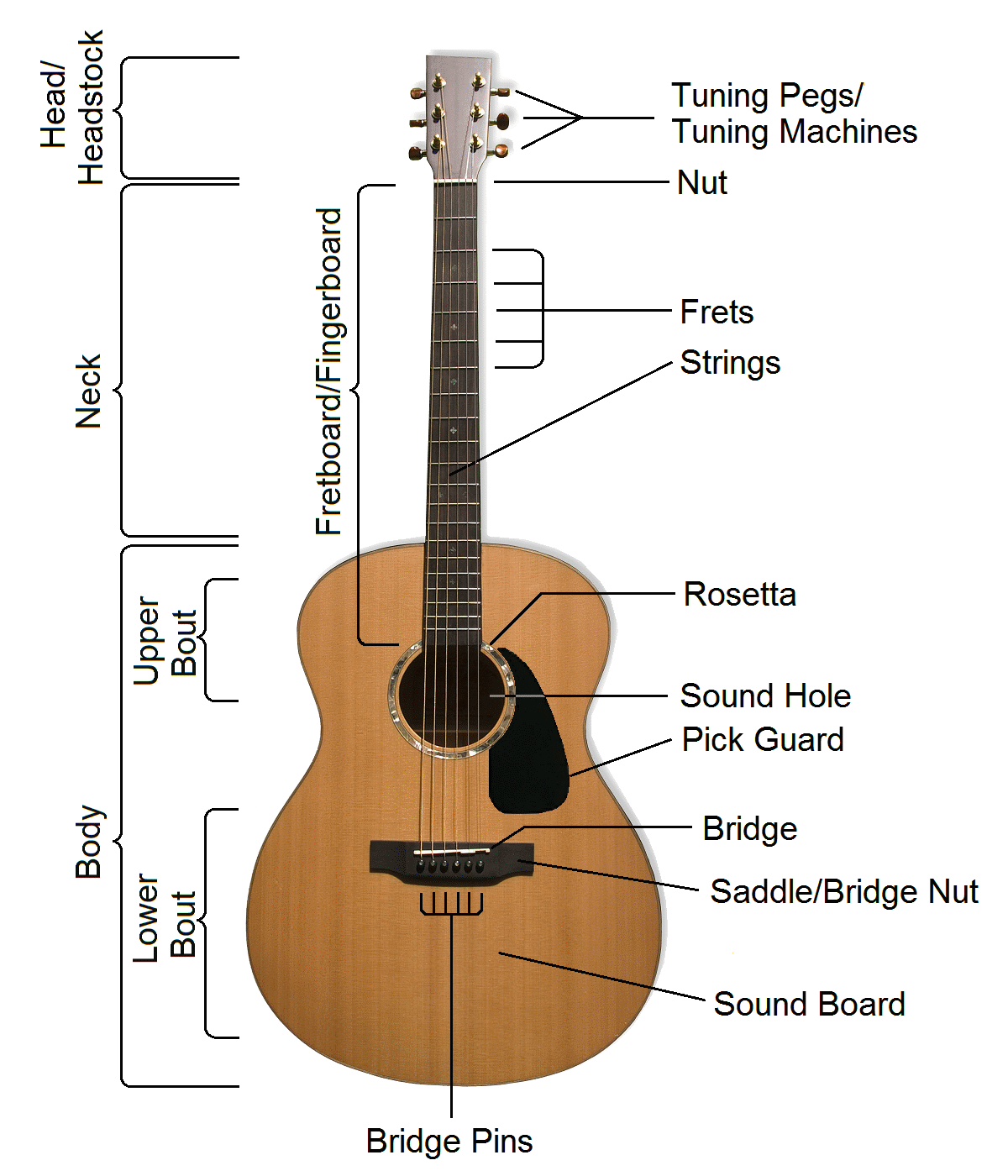
guitar – a stringed musical instrument with a fretted fingerboard, with a curved body of wood or plastic, usually having six or twelve strings, played by plucking or strumming with the fingers or a pick. See also acoustic guitar and electric guitar.
guitar amp – short for guitar amplifier.
guitar amp emulator – see amplifier modeler.
guitar amp modeler – see amplifier modeler.
guitar amp sim – see amplifier modeler.
guitar amp simulator – see amplifier modeler.
guitar amplifier – an amplifier specifically designed for amplifying signals from an electric guitar. Unlike some other instruments, speakers used with guitar amplifiers typically have a limited frequency range, use only midrange drivers, and are easily driven into distortion (usually for effect), unless an FRFR speaker is used. They come in two main versions: (a) head unit with separate speaker cabinet or (b) combo amp, in which the amp and cabinet are combined. Called a guitar amp for short.
guitar amplifier emulator – see amplifier modeler.
guitar amplifier modeler – see amplifier modeler.
guitar amplifier sim – see amplifier modeler.
guitar amplifier simulator – see amplifier modeler.
guitar body – see body, definition #2.
guitar cab – short for guitar cabinet.
guitar cab emulator – see amplifier modeler.
guitar cab modeler – see amplifier modeler.
guitar cab sim – see amplifier modeler.
guitar cab simulator – see amplifier modeler.
guitar cabinet – the speaker enclosure used with a guitar amplifier. They come in two main versions: (a) a stand alone cabinet with a head unit that normally sits on top of it or (b) a combo amp, in which the amp and cabinet are combined. Called a guitar cab for short.
guitar cabinet emulator – see amplifier modeler.
guitar cabinet modeler – see amplifier modeler.
guitar cabinet sim – see amplifier modeler.
guitar cabinet simulator – see amplifier modeler.
guitar controller – a device that plays like an electric guitar that outputs MIDI signals that can be used to control synthesizers and sound modules.
guitar modeler – see amplifier modeler.
guitar pedal – see pedal.
guitar playing techniques – various techniques for playing or picking a guitar, including alternate picking, chicken picking, fingerstyle, fret-hand muting, hand crossing, hybrid picking, inside picking, outside picking, muted strumming, palming, slide guitar, tapping, and tremolo picking.

guitar processor – a device that adds effects directly to a guitar signal, such as amp modeling, delay, and reverberation. See also effects unit.
guitar speaker – see guitar amplifier.
guitar stand – a device designed to hold a guitar temporarily, usually in an upright position, when not being played.
guitar string – see string.
guitar tunings – the pitches to which the open strings (no strings fingered) on a guitar are tuned. By convention, the tuning is defined by the notes in order from the lowest-pitched string to the highest-pitched string. Note: This is contrary to the way the strings are named with the highest-pitched string being referred to as the 1st string, and the lowest-pitched as the 6th string. For standard tuning the string pitches are E2, A2, D3, G3, B3, and E4, and usually shown as EADGBE. Standard tuning is the most commonly used tuning by most guitarists, but there are many alternate tunings, which are often just variations on the standard tuning. The alternate tunings are used for special purposes or in certain musical traditions. See also open tuning.
Gundry dip – the claim that some loudspeaker manufacturers intentionally reduce the output of their speakers in the 2- to 4-KHz range to reduce harshness, sound smoother, and be less fatiguing. One theory is that, in accordance with the Fletcher Munson effect, human ears have difficulty hearing deep bass and high treble, relative to midrange frequencies at lower volumes. While the Gundry dip would correct this problem, it would be counter productive at higher listening volumes. Also called the BBC dip because of some early research done by the BBC.
gun microphone – see shotgun microphone.
gut strings – see catgut.
gutterboxing – see windowboxing.
Note: We believe this is the largest dictionary (glossary) of terms specific to usage within the recording industry that is currently available on the internet, with more than 8,800 entries, nearly 800 illustrations, and dozens of tables. Some of the terms have different or additional meanings in other situations, especially within the electronic, automotive, scientific, and computer industries. Of necessity there are obvious overlaps into other fields such as music, electronics, and computers, but such excursions are limited to information deemed pertinent to the knowledge required to operate and/or participate effectively in the workings of a recording studio. Also included are terms related to sound reinforcement (live performances) including wireless microphone technology because a working knowledge of that terminology is necessary for recording at live performance venues. Because recording studios also record audio for video and motion pictures (films), some terminology from those fields is included. Some scientific terms are included because they help explain studio terminology. For example, electromagnetism explains how microphones, loudspeakers, and guitar pickups work. Knowledge of radio waves and the radio frequency spectrum is needed to explain wireless devices. Any trademarks or trade names mentioned belong to their respective owners. The information contained in this dictionary is believed to be accurate at the time of publication. This information is subject to change without notice. The information was obtained from and cross-checked with a variety of sources that are believed to be reliable. However, Los Senderos Studio, LLC does not guarantee the accuracy or completeness of the information contained herein. Please contact us to report any errors, omissions, discrepancies, or broken links. Los Senderos Studio shall not be responsible for any consequences or damages arising out of the use of this information. Nothing in this glossary should be interpreted as legal advice. For a glossary providing information on legal and business matters for musicians, we suggest you consult Musicians Business Dictionary.
A note on alphabetical order: The terms in this glossary are alphabetical without regard to spaces and punctuation. For example, AM Radio follows amplitude. While this may seem to be at odds with other conventions, it eliminates confusion with words such as pickup, which is sometimes written as pick up or pick-up. In addition, all symbols such as &, -, or / are ignored. The entries on the number page (0-9) are listed in increasing value within each digit. For example, all of the entries beginning with 1 are listed before those starting with 2. For Greek letters (α-ω), the entries are in Greek alphabetical order.


